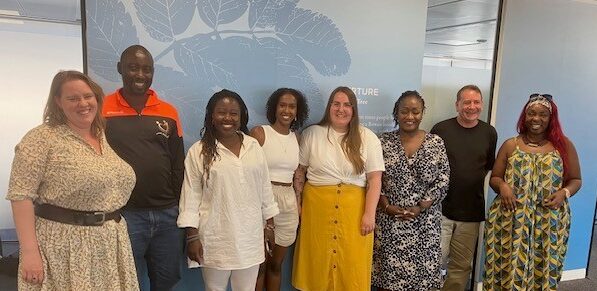Digital Scotland: future-proofing the third sector
20 October 2014 | Estimated reading time: 3 minutes
We recently worked with the Health and Social Care Alliance on their #ourfuture14 conference. You can see the storify that our social reporter team produced here.
Our Director Ross has also contributed to ‘Imagining the Future’ – a collection of think pieces providing insight into some of the essential ingredients for shaping a fairer, healthier future Scotland. Below is the full piece from the document.
Digital Scotland: Future-proofing the third sector
The Scottish Government has a bold ambition: Scotland should be a world-leading digital nation by 2020. It’s hard to argue against that – Independent or not it’s clear Scotland needs to embrace new technology if we are to have a truly diverse, robust economy. The Scottish Government’s ‘Digital Future’ strategy outlines four key strands: connectivity, digital public services, digital economy and digital participation. The Scottish third sector has a pivotal role to play, particularly around digital participation and public service delivery. But without a fundamental shift in thinking there is a danger the third sector will be left behind – along with vast swathes of the population.
30% of Scots don’t have basic digital skills. That figure rises to 50% of people with disabilities and 60% where the individual has no qualifications. 15% of Scots have never used the internet. A Citizen’s Advice Scotland survey found 36% of their clients have never been online. These stark figures highlight a massive societal gap that needs to be addressed if we are to achieve that 2020 vision of a digital Scotland. Access to physical technology and connectivity, particularly in rural areas, are important. But for me they’re not the big issues. We need to ensure people have basic skills needed to get online and embrace the internet. That word ‘embrace’ is key. Oxford University looked at why people choose not to use the internet in their everyday lives – 82% of respondents were ‘not interested’. Researchers found no evidence that these people are restricted from going online. They simply don’t care. For many older, disabled and unemployed people their first foray into the digital world will be mandatory online-only benefits claim forms – hardly an inspiring start. In a sense digital inclusion is more about social barriers than technological ones.
Recent research on digital exclusion from the Carnegie UK Trust recommends that ‘trusted intermediaries, such as voluntary workers, community development workers…can help to deliver the personalised, differentiated approach that is needed to help different groups of citizens in Glasgow to get online’. So third sector staff and volunteers will be key in ensuring the digitally excluded are skilled and enthused but it’s also worth thinking about that other strand of the Scottish Government’s digital strategy – digital public services. I believe the third sector can deliver innovative, effective services through a ‘digital-first’ approach. Of course we will always need face-to-face interaction with service users but let’s not use digital exclusion as an excuse for inaction. So could an Argyll & Bute counselling service save money and reach hundreds more isolated individuals if it allocated half its travel budget to video technology rather than the environmentally-unfriendly, time consuming practice of counsellors driving all over the region?
My experience on Foundation Scotland’s grants committee, chairing other funding panels and working with Scottish charities in my role at Third Sector Lab tells me that two fundamental areas need to be addressed to get the voluntary sector ready. First we need a skilled workforce ready to ask how digital technology can help us deliver cost-effective services that make a real difference to the lives of Scottish people; we need digital champions within every Scottish non-profit. Secondly we need funders to understand the difference digital can make and put their money where their mouth is. We don’t necessarily need dedicated funding streams – digital to should permeate all areas of the funding landscape. We also need to ensure grants officers have the skillset to objectively assess tech-based project applications from charities and social enterprises. Once we make that shift I believe the Scottish third sector can lead the world in digital media for social good.







